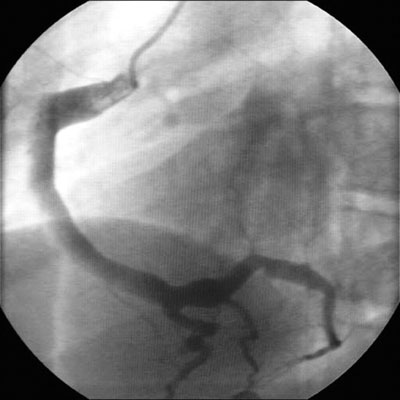Resumo
Definição
História e exame físico
Principais fatores diagnósticos
- presença de fatores de risco
- erupção cutânea polimorfa
- hiperemia conjuntival
- mucosite
- alterações cutâneas nos membros periféricos
- linfonodos cervicais aumentados
- aneurismas da artéria coronária
- febre e irritabilidade extrema
Outros fatores diagnósticos
- pericardite com efusão
- insuficiência cardíaca congestiva
- dor na articulação ou edema
- manifestações neurológicas
- manifestações gastrointestinais
- manifestações urológicas
- outras manifestações dermatológicas
Fatores de risco
- ascendência asiática
- 3 meses a 4 anos de idade
- sexo masculino
Investigações diagnósticas
Primeiras investigações a serem solicitadas
- Hemograma completo
- velocidade de hemossedimentação (VHS)
- proteína C-reativa sérica
- ecocardiograma
Tests to consider
- testes séricos da função hepática
- urinálise
- radiografia torácica
- eletrocardiograma
- ultrassonografia da vesícula biliar
- ultrassonografia dos testículos
- punção lombar
- angiografia por ressonância magnética
- cateterismo cardíaco e angiografia
- testes de peptídeos natriuréticos
Treatment algorithm
apresentação ≤10 dias a partir do início; ou apresentação >10 dias do início com evidências de inflamação contínua
apresentação >10 dias do início sem evidências de inflamação contínua
após o episódio inicial: Z-score sempre <2; sem comprometimento em nenhum momento
após o episódio inicial: Z-score ≥2.0 a <2.5; apenas dilatação
após episódio inicial: Z-score ≥2.5 a <5.0; aneurisma pequeno
após o episódio inicial: Z-score ≥5 a <10 (com dimensão luminal absoluta <8 mm); aneurisma médio
após episódio inicial: Z-score ≥10 ou diâmetro luminal absoluto ≥8 mm; aneurisma grande ou gigante
Contributors
Authors
Paul Brogan, BSc(Hon), MBChB(Hon), FRCPCH, MSc, PhD
Professor of vasculitis
University College London
London
UK
Disclosures
PB is co-chief investigator of the KDCAAP trial, and is an author of several references cited in this topic.
Kirsty McLellan, BMedSci, MBChB, MRCPCH
Specialist Registrar in Paediatric Rheumatology
Great Ormond Street Hospital
London
UK
Disclosures
KM declares she has no competing interests.
Acknowledgements
Dr Paul Brogan and Dr Kirsty McLellan would like to gratefully acknowledge Professor Abraham Gedalia and Dr James Krulisky, previous contributors to this topic.
Disclosures
AG declares that he has no competing interests. JK declares that he is a paid consultant for Axia Medical Solutions, a small skincare company from Carlsbad, CA.
Peer reviewers
Michael Levin, null
Professor of International Child Health
Imperial College London
London
Disclosures
ML declares that he has no competing interests
Russell W. Steele, MD
Editor in Chief
Journal of Clinical Pediatrics
Department of Pediatrics
Division of Infectious Diseases
Ochsner Children's Health Center
New Orleans
LA
Disclosures
RWS declares that he has no competing interests.
John L. Ey, MD
Clinical Professor of Pediatrics
Department of Pediatrics
Oregon Health Science University
Portland
OR
Disclosures
JLE declares that he has no competing interests.
David Burgner, BSc(Hons), MBChB, MRCP, MRCPCH, FRACP, DTMH, PhD
Principal Research Fellow
Murdoch Childrens Research Institute
The Royal Children’s Hospital
Victoria
Australia
Disclosures
DB has received competitive research funding from the National Heart Foundation Australia and from the Agency for Science, Technology and Research of the Singapore Government. He is co-inventor on a patent related to diagnostics submitted through the Genome Institute of Singapore.
Peer reviewer acknowledgements
BMJ Best Practice topics are updated on a rolling basis in line with developments in evidence and guidance. The peer reviewers listed here have reviewed the content at least once during the history of the topic.
Disclosures
Peer reviewer affiliations and disclosures pertain to the time of the review.
References
Key articles
McCrindle BW, Rowley AH, Newburger JW, et al; American Heart Association. Diagnosis, treatment, and long-term management of Kawasaki disease: a scientific statement for health professionals from the American Heart Association. Circulation. 2017 Apr 25;135(17):e927-99.Full text Abstract
Kawasaki T, Kosaki T, Okawa S, et al. A new infantile acute febrile mucocutaneous lymph node syndrome (MLNS) prevailing in Japan. Pediatrics. 1974 Sep;54(3):271-6. Abstract
de Graeff N, Groot N, Ozen S, et al. European consensus-based recommendations for the diagnosis and treatment of Kawasaki disease - the SHARE initiative. Rheumatology (Oxford). 2019 Apr 1;58(4):672-82.Full text Abstract
Gorelik M, Chung SA, Ardalan K, et al. 2021 American College of Rheumatology/Vasculitis Foundation guideline for the management of Kawasaki disease. Arthritis Care Res (Hoboken). 2022 Apr;74(4):538-48. Abstract
Newburger JW, Takahashi M, Beiser AS, et al. A single intravenous infusion of gamma globulin as compared with four infusions in the treatment of acute Kawasaki syndrome. N Engl J Med. 1991 Jun 6;324(23):1633-9. Abstract
Lei WT, Chang LS, Zeng BY, et al. Pharmacologic interventions for Kawasaki disease in children: A network meta-analysis of 56 randomized controlled trials. EBioMedicine. 2022 Apr;78:103946.Full text Abstract
Reference articles
A full list of sources referenced in this topic is available to users with access to all of BMJ Best Practice.

Differentials
- Infecção por estafilococos ou estreptococos
- Artrite idiopática juvenil sistêmica
- Escarlatina
More DifferentialsGuidelines
- Guideline for the management of Kawasaki disease
- European consensus-based recommendations for the diagnosis and treatment of Kawasaki disease - the SHARE initiative
More GuidelinesLog in or subscribe to access all of BMJ Best Practice
Use of this content is subject to our disclaimer